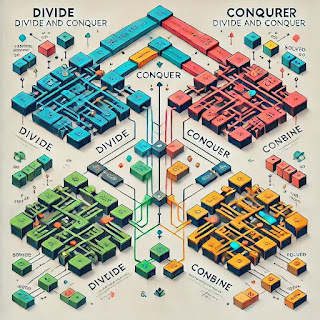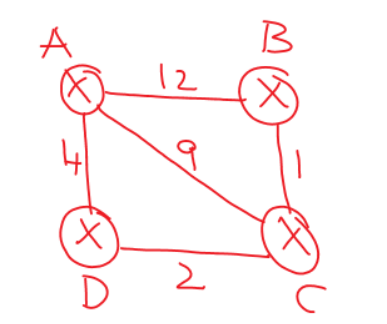DIVIDE & CONQUER APPROACH
The Divide and Conquer approach is a powerful algorithmic paradigm used to solve problems by breaking them down into smaller, more manageable subproblems. Each subproblem is solved independently, and the solutions to the subproblems are then combined to form the solution to the original problem.
Steps in Divide and Conquer
- Divide: Split the problem into smaller subproblems that are of the same type as the original.
- Conquer: Solve each subproblem independently. If the subproblems are still large, recursively apply the divide and conquer approach.
- Combine: Merge the solutions of the subproblems to obtain the final solution to the original problem.
Characteristics of Divide and Conquer
- Recursive in nature.
- Works well for problems that can be divided into independent subproblems.
- Frequently implemented using recursion.
- Often more efficient than other approaches like brute force for large problems.
Examples of Divide and Conquer Algorithms
Merge Sort:
- Divide the array into two halves.
- Recursively sort each half.
- Merge the two sorted halves.
Quick Sort:
- Select a pivot element.
- Partition the array into two subarrays: elements less than the pivot and elements greater than the pivot.
- Recursively sort the subarrays.
Binary Search:
- Divide the sorted array into two halves.
- Compare the target element with the middle element.
- Recursively search in the left or right half, depending on the comparison.
Strassen's Algorithm for Matrix Multiplication:
- Divide matrices into smaller submatrices.
- Perform multiplications and additions on submatrices.
- Combine results to get the final matrix.
Closest Pair of Points:
- Divide the set of points into two halves.
- Recursively find the closest pair in each half.
- Combine results by checking the boundary strip.
Advantages of Divide and Conquer
- Reduces complex problems into simpler subproblems.
- Makes use of recursion, leading to cleaner and more structured code.
- Often improves efficiency, especially for problems with overlapping subproblems or repetitive computations.
Disadvantages of Divide and Conquer
- Recursive implementations can lead to higher space complexity due to the use of the call stack.
- The overhead of dividing and combining might outweigh the benefits for smaller inputs.
Use Cases
Divide and conquer is widely used in:
- Sorting and searching algorithms.
- Computational geometry.
- Optimization problems.
- Divide and conquer dynamic programming approaches.



Comments
Post a Comment